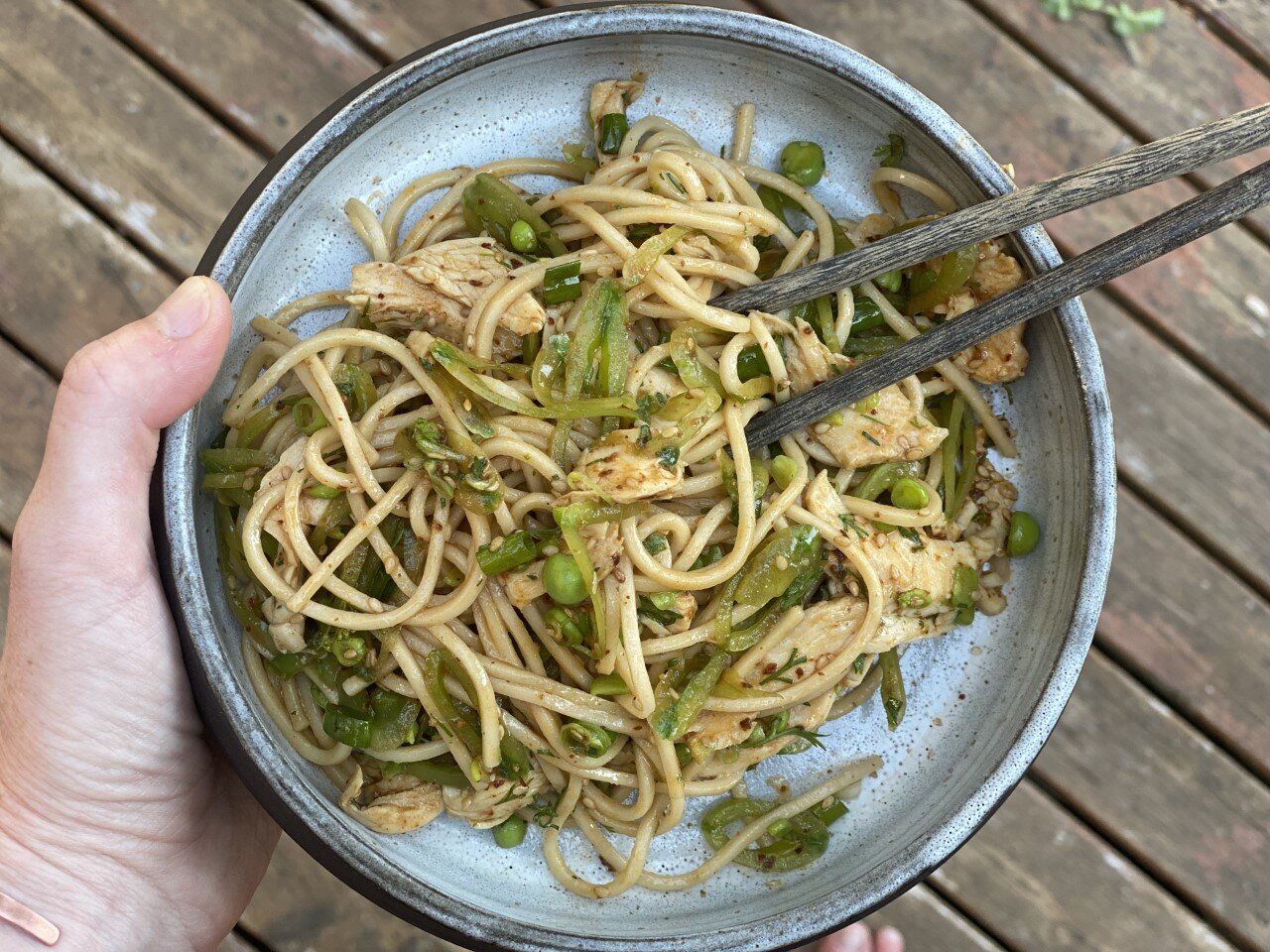from A Family Feast
5 cups bread flour plus up to 2 cups more
2 teaspoons salt
2 teaspoons instant yeast
2 cups room temperature water
6 tablespoons extra virgin olive oil plus more to mist over dough
1 pound zucchini, sliced thin using a mandoline
1 large or two medium eating tomatoes such as beefsteak, sliced thin
1 teaspoon kosher salt
½ cup oil cured Italian olives, pitted
1 cup Romano cheese, freshly grated
Herbed oil
1 ¼ cups extra virgin olive oil
½ cup fresh basil, chopped
2 tablespoons fresh flat leaf parsley, chopped
1 ½ teaspoons kosher salt
½ teaspoon large grind black pepper
1 ½ teaspoons garlic powder
In the bowl of a stand mixer with the dough hook attachment, place 5 cups of the flour along with salt and yeast and mix to combine.
Add all of the water and 6 tablespoons of the oil and mix on medium speed to form a sticky dough. After 3-4 minutes of mixing, the dough should be pulling away from the sides but still be stuck to the bottom. If the dough is still sticking to the sides, add a little more flour until just the bottom sticks. Mix for a total of four more minutes on medium.
Pour out a cup of bread flour onto your counter and spread out to about a 6×6-inch square and using a bowl scraper, scrape the dough into the center of the flour.
Shape the dough by stretching into a small neat rectangle about 10×4. Does not have to be exact. Dust the top with flour and let this sit for five minutes.
Grab the left and right sides, stretch and fold towards the center making the same rectangle size only now three layers thick. Spray the top with olive oil from a mister, then dust with more bread flour. Cover with plastic and let sit 30 minutes.
Repeat the same method by stretching, folding, misting and dusting and again let rest covered 30 more minutes.
Repeat one last time but after you cover it, let it sit for 90 minutes.
During the time the dough rests, you will dry roast the vegetables and make the herbed oil.
Set oven to 250 degrees F.
Line three sheet pans with parchment and spray with pan spray.
Lay out the sliced zucchini on two pans and the tomato on the third, sprinkle with salt and bake for about an hour or so flipping the vegetables half way through. Bake until the slices are dried and slightly shriveled and just starting to brown. I rotated the three pans in my oven so each had a turn one each rack since the bottom rack cooked the quickest. Once done, cool, cover and refrigerate until next day.
To make the herbed oil, microwave the oil to 110 degrees F and add all of the other herbed oil ingredients. Set this aside.
Once the dough has rested the final 90 minutes, line a sheet tray with parchment paper and using a brush dipped into the herbed oil, brush the parchment paper liberally. (the herbs should have settled, let them stay that way and just dip the brush into the top oil)
Place the dough onto the oiled pan and press to fit the dough to the pan. Don’t worry about getting it into the corners. When it proofs the next day, it will fill up the pan.
Once the dough is pressed into the pan, use your finger tips to press dimples into the dough all over the top then spoon some of the herbed oil over the top (this time stir first and use the herbs). Cover with plastic and refrigerate for the next day and up to three days.
Three hours before baking, remove the dough from the refrigerator and lay out the tomato slices and zucchini slices all over the top to about a half inch from the edges. Pit the olives and flatten with your fingers and scatter over the top. Spread the rest of the herbed oil all over the top. It will seem like a lot but as the bread bakes, it absorbs the oil.
Cover with plastic and a dish towel and let sit on your counter for three hours.
15 minutes before the three hours is up, preheat oven to 500 degrees F.
Place the pan in the oven on the center rack, lower the temperature to 450 degrees F and bake for 10 minutes.
Rotate pan 180 degrees and bake for 7-10 more minutes or until it is just starting to brown.
Sprinkle on the Romano cheese and bake for five more minutes or until golden brown then remove from the oven.
Immediately slide the now baked focaccia off of the pan and onto a cooling rack. If the parchment paper slides out with it, slip it out from beneath the bread and let the bread cool for at least 20 minutes.
Slide the bread from the cooling rack onto a cutting board and cut 4X4 (16 pieces) or if you want smaller pieces, cut four the short way and five the long way for 20 pieces.
Store leftover bread in the refrigerator.



















